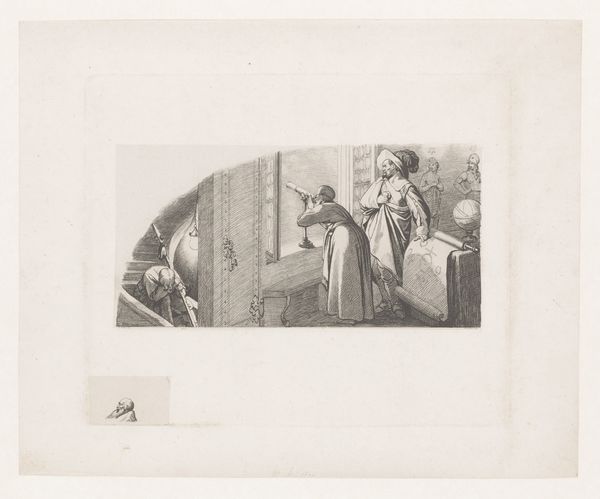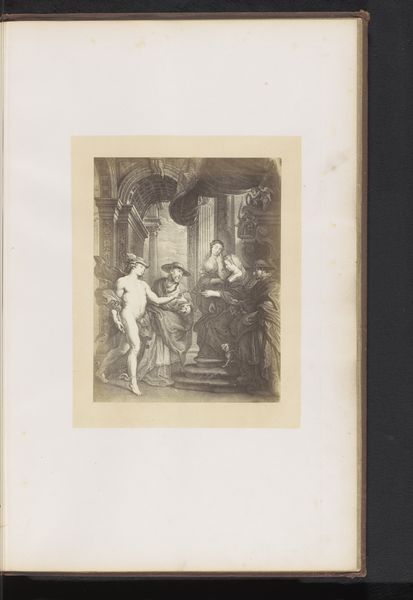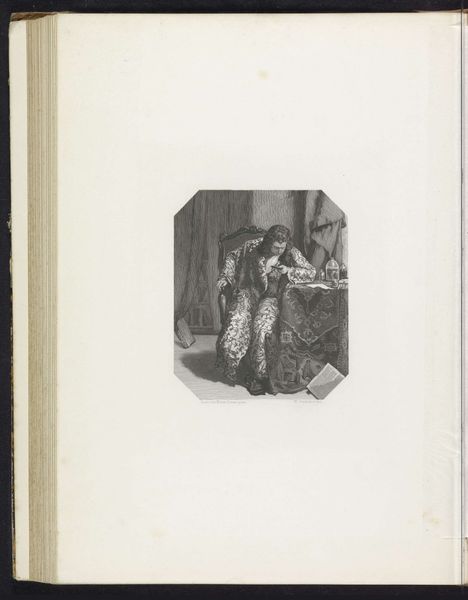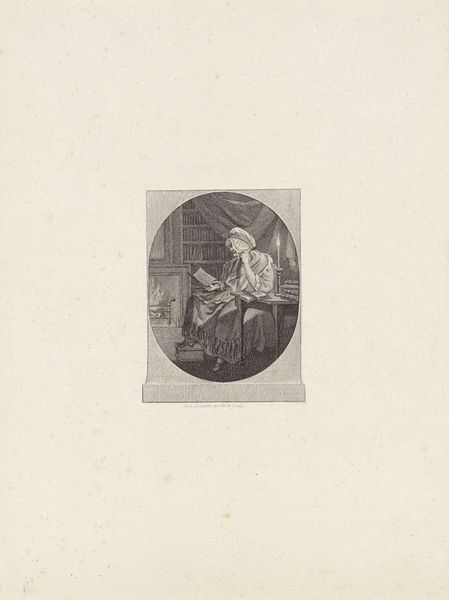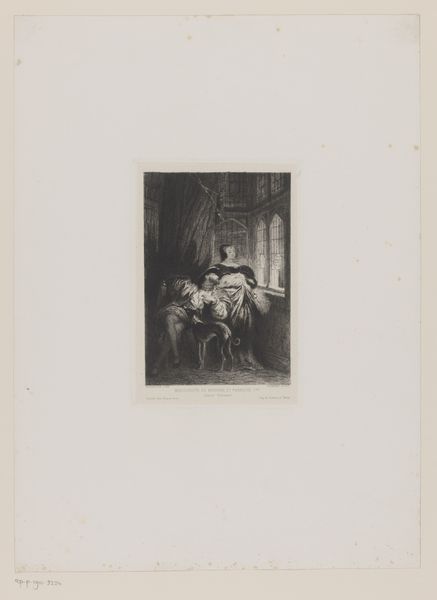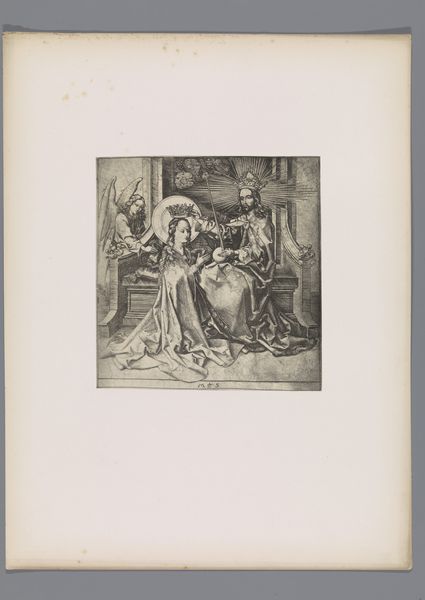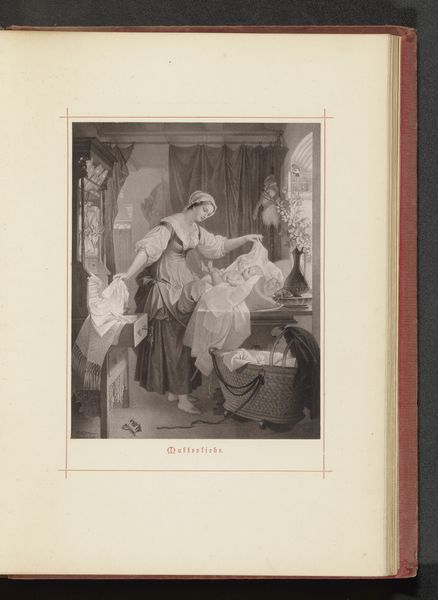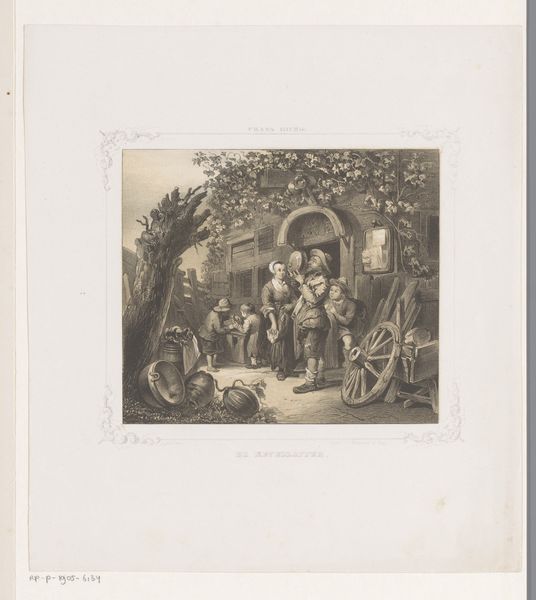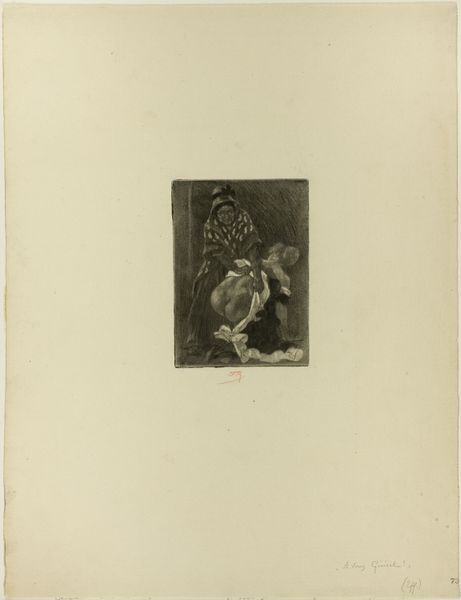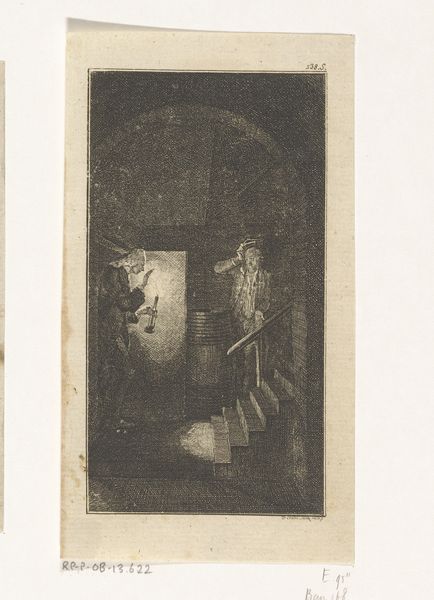
Fotoreproductie van een prent naar een schilderij, voorstellende de Annunciatie before 1869
0:00
0:00
print, engraving
#
medieval
# print
#
line
#
history-painting
#
engraving
Dimensions: height 129 mm, width 161 mm
Copyright: Rijks Museum: Open Domain
Curator: This print, "Fotoreproductie van een prent naar een schilderij, voorstellende de Annunciatie," translating to "Photographic reproduction of a print after a painting, depicting the Annunciation", dates from before 1869 and gives a rather different perspective on a well-known theme. Editor: It’s arresting, the light seems to glow even in monochrome. There's something about the contrast and almost stark presentation that brings an unusual feeling of austerity to such a spiritually resonant subject. It draws your eye right into the composition's delicate symbolism. Curator: Well, prints such as this one held a significant social role; before widespread photography, they disseminated artistic ideas, making them accessible to broader audiences. They shaped popular conceptions of history and scripture. Editor: Indeed. Look at the way Mary is portrayed. Instead of passive acceptance, there's almost a serene intelligence, a quiet determination. That's so fascinating to me; it subtly alters how the narrative might have been understood by contemporary viewers. Curator: Observe the use of the doves – typical, sure, but rendered almost unsettlingly here. One is struck by the sharp lines of the figures. There are elements which appear directly informed by the aesthetics of the medieval, but also foreshadow sensibilities to come. Editor: I agree; even in the medium of an engraving, which can lend itself to the iconic and repetitive, this piece suggests complex emotions in its visual grammar. How the symbolic elements like the lilies contribute to emotional perception is amazing; in contrast to this emotional depth, one can clearly detect its roots as a cultural tool used for historical preservation. Curator: So many questions this prompts, about who had access to these images and what role the publishers and printmakers played in emphasizing certain elements of the stories being depicted. It invites investigation. Editor: Yes, definitely. I find I'm left contemplating the long and ever-changing cultural life of such potent images and narratives.
Comments
No comments
Be the first to comment and join the conversation on the ultimate creative platform.
